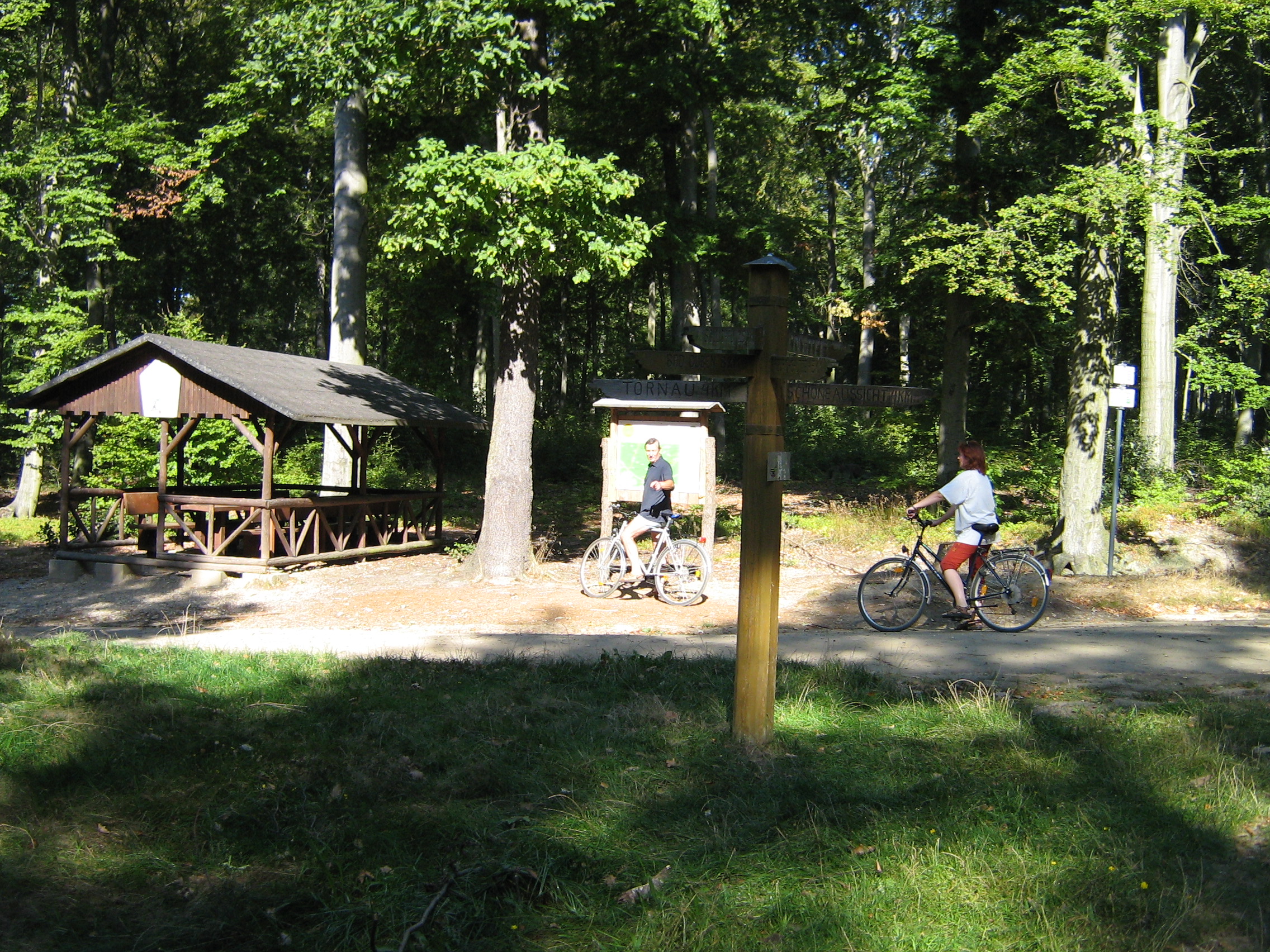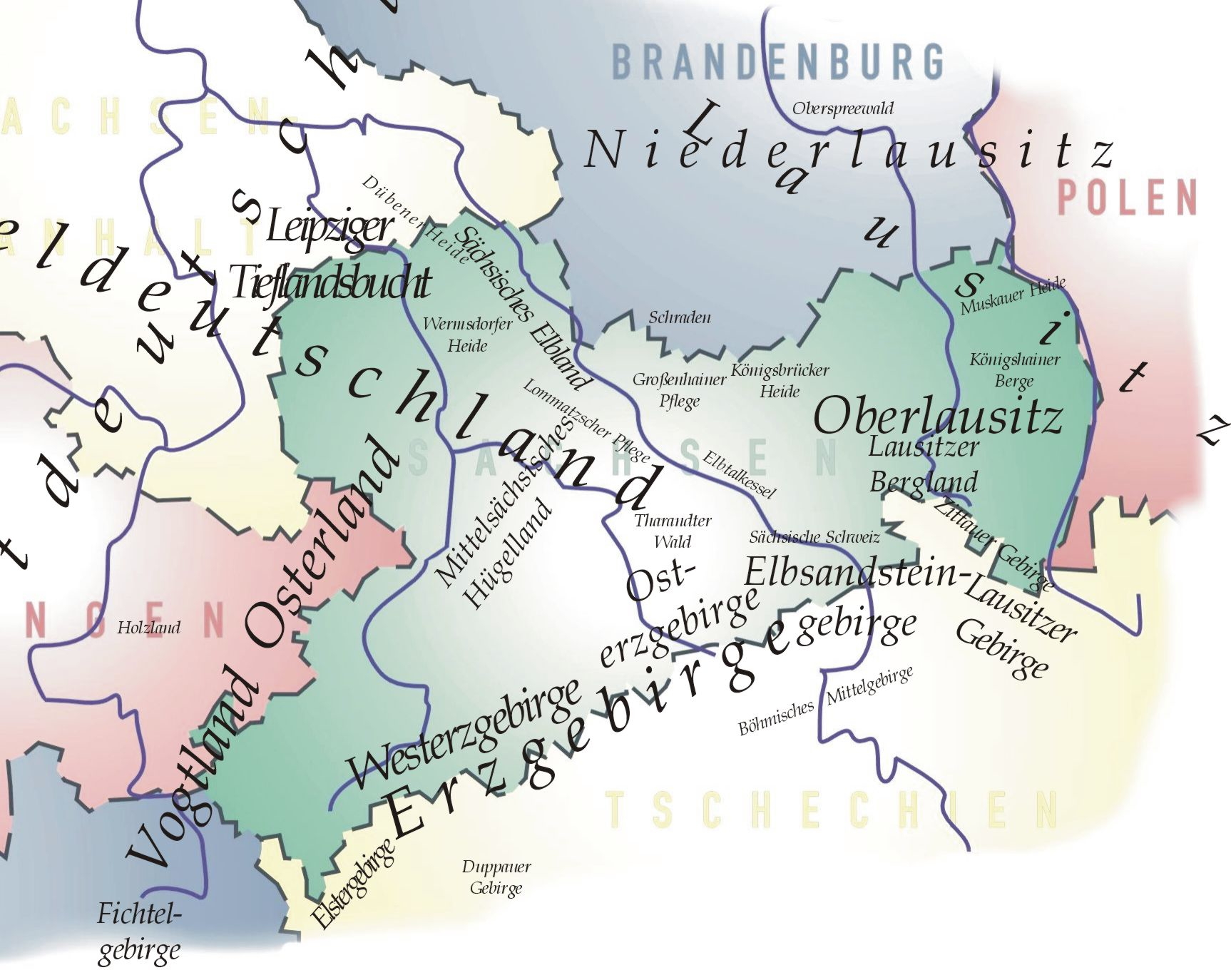|
Düben Heath
The Düben Heath (german: Dübener Heide) is a landscape in Germany in eastern Saxony-Anhalt and northern Saxony, between the rivers Elbe and the Mulde, on the northern edge of the Leipzig Bay. It is bounded in the west by the town of Dessau, in the north by the Elbe valley (Wittenberg, Pretzsch), in the southeast by Torgau, in the south by Eilenburg and the course of the Mulde through Bad Düben and Bitterfeld. The Düben Heath is a terminal moraine landscape formed during the Saale glaciation (Plateau of Gräfenhainichen-Schmiedeberg) with predominantly sandy soils. Beneath this Pleistocene cover lie lignite-bearing strata. The majority of the Düben Heath is covered by forest. The eastern part of the Düben Heath, with the resort of Bad Düben, is designated as a nature park. In the western part around Gräfenhainichen and Bitterfeld, lignite was extracted until the end of the 1980s in open pits; as a result large areas of the natural woodland landscape were destroyed. Sinc ... [...More Info...] [...Related Items...] OR: [Wikipedia] [Google] [Baidu] |
Sand
Sand is a granular material composed of finely divided mineral particles. Sand has various compositions but is defined by its grain size. Sand grains are smaller than gravel and coarser than silt. Sand can also refer to a textural class of soil or soil type; i.e., a soil containing more than 85 percent sand-sized particles by mass. The composition of sand varies, depending on the local rock sources and conditions, but the most common constituent of sand in inland continental settings and non-tropical coastal settings is silica (silicon dioxide, or SiO2), usually in the form of quartz. Calcium carbonate is the second most common type of sand, for example, aragonite, which has mostly been created, over the past 500million years, by various forms of life, like coral and shellfish. For example, it is the primary form of sand apparent in areas where reefs have dominated the ecosystem for millions of years like the Caribbean. Somewhat more rarely, sand may be composed of calciu ... [...More Info...] [...Related Items...] OR: [Wikipedia] [Google] [Baidu] |
List Of Regions Of Saxony
A classification of the various regions of Saxony cannot be achieved in any uniform or standard way, as the commonly used names usually represent a mixture of historical regions and geographical features. Many well-known names of regions, such as Lusatia, comprise a mixture of natural habitats and geological zones, while other, scientifically assigned, names are only known in university departments. The following list contains, in alphabetical order, both those names that are commonly used, as well as those only known regionally or used in the scientific field. They are listed by their English names with their German names in brackets. Names of settlements or other geographic features are omitted here. Overall, across much of the area, Saxony belongs both to Eastern Germany and Central Germany. However, on a smaller scale there are many regions and landscapes that overlap the boundaries of the Free State and extend beyond it: * Bahra Valley (''Bahratal'') * Biela Valley (''Bi ... [...More Info...] [...Related Items...] OR: [Wikipedia] [Google] [Baidu] |
Düben Heath Nature Park
The Düben Heath Nature Park (german: Naturpark Dübener Heide), which covers large areas of the eponymous Düben Heath, was the first nature park in Germany that resulted from a citizen's initiative and not from a government office. Around 1990, in order to prevent the further spreading and advancement of brown coal mining in the neighbourhood, the first citizens' initiatives were established for the protection and conservation of nature in the area. The park is covered by a very varied, rolling heathland formed as a result of the Saale glaciation. It is a traditional excursion and recreation area in the relatively sparsely wooded heart of Central Germany. Its area is roughly evenly divided between the states of Saxony and Saxony-Anhalt, about midway between Wittenberg in the northeast and Leipzig in the southwest. Other major towns in the immediate vicinity are Dessau, Bitterfeld and Torgau. In the north and northeast the nature park is bounded by the floodplain of the Middle ... [...More Info...] [...Related Items...] OR: [Wikipedia] [Google] [Baidu] |
Former Eastern Territories Of Germany
The former eastern territories of Germany (german: Ehemalige deutsche Ostgebiete) refer in present-day Germany to those territories east of the current eastern border of Germany i.e. Oder–Neisse line which historically had been considered German and which were annexed by Poland and Soviet Union after World War II, these territories were also the lands where Germans used to be only or main ethnicity. So in contrast to the lands awarded to the restored Polish state by the Treaty of Versailles after World War I, the German territories lost with the Potsdam Agreement after World War II on 1 August 1945 were either almost exclusively inhabited by Germans before 1945 (bulk of East Prussia, bulk of Lower Silesia, Farther Pomerania, and parts of Western Pomerania, Lusatia, and Neumark awarded to Poland), mixed German-Polish with a German majority ( Danzig, Posen-West Prussia Border March, Lauenburg and Bütow Land, the southern and western rim of East Prussia, Ermland, West Upper S ... [...More Info...] [...Related Items...] OR: [Wikipedia] [Google] [Baidu] |
Upper Saxon German
Upper Saxon (german: Obersächsisch, ; ) is an East Central German language spoken in much of the modern German state of Saxony and in adjacent parts of southeastern Saxony-Anhalt and eastern Thuringia. As of the early 21st century, it's mostly extinct and a new regiolect (also known as ) has emerged instead. Though colloquially called "Saxon" (), it is not to be confused with the Low Saxon dialect group in Northern Germany. Upper Saxon is closely linked to the Thuringian dialect spoken in the adjacent areas to the west. Standard German has been heavily based on Upper Saxon, especially in its lexicon and grammar. This is due to it being used as the basis for early developments in the standardization of German during the early 1500s, including the translation of the Bible by Martin Luther. History Upper Saxon evolved as a new variety in the course of the medieval German ''Ostsiedlung'' (eastern colonisation) from about 1100 onwards. Settlers descending from the stem duchies of ... [...More Info...] [...Related Items...] OR: [Wikipedia] [Google] [Baidu] |
Railway Vehicle
The term rolling stock in the rail transport industry refers to railway vehicles, including both powered and unpowered vehicles: for example, locomotives, freight and passenger cars (or coaches), and non-revenue cars. Passenger vehicles can be un-powered, or self-propelled, single or multiple units. A connected series of railway vehicles is a train (this term applied to a locomotive is a common misnomer). In North America, Australia and other countries, the term consist ( ) is used to refer to the rolling stock in a train. In the United States, the term ''rolling stock'' has been expanded from the older broadly defined "trains" to include wheeled vehicles used by businesses on roadways. The word ''stock'' in the term is used in a sense of inventory. Rolling stock is considered to be a liquid asset, or close to it, since the value of the vehicle can be readily estimated and then shipped to the buyer without much cost or delay. The term contrasts with fixed stock (infrastructu ... [...More Info...] [...Related Items...] OR: [Wikipedia] [Google] [Baidu] |
Bucket-wheel Excavator
A bucket-wheel excavator (BWE) is a large heavy equipment machine used in surface mining. The primary function of BWEs is to act as a continuous digging machine in large-scale open-pit mining operations, removing thousands of tons of overburden a day. What sets BWEs apart from other large-scale mining equipment, such as bucket chain excavators, is their use of a large wheel consisting of a continuous pattern of buckets used to scoop material as the wheel turns. They rank among the largest vehicles (land or sea) ever produced, and the largest of the bucket-wheel excavators (the 14,200 ton Bagger 293 still holds the Guinness World Record for the heaviest land-based vehicle ever constructed). History Bucket-wheel excavators have been used in mining for the past century, with some of the first being manufacture ... [...More Info...] [...Related Items...] OR: [Wikipedia] [Google] [Baidu] |
Museum
A museum ( ; plural museums or, rarely, musea) is a building or institution that cares for and displays a collection of artifacts and other objects of artistic, cultural, historical, or scientific importance. Many public museums make these items available for public viewing through exhibits that may be permanent or temporary. The largest museums are located in major cities throughout the world, while thousands of local museums exist in smaller cities, towns, and rural areas. Museums have varying aims, ranging from the conservation and documentation of their collection, serving researchers and specialists, to catering to the general public. The goal of serving researchers is not only scientific, but intended to serve the general public. There are many types of museums, including art museums, natural history museums, science museums, war museums, and children's museums. According to the International Council of Museums (ICOM), there are more than 55,000 museums in 202 countrie ... [...More Info...] [...Related Items...] OR: [Wikipedia] [Google] [Baidu] |
Ferropolis
Ferropolis, "the city of iron", is an open-air museum of huge mid-20th century industrial machines in Gräfenhainichen, a city between Wittenberg and Dessau, Germany. These can measure up to 30 meters high and 120 meters long, and weigh up to 1,980 tons. The area is also used for several events such as opera performances or music festivals, including the Splash! Festival, Melt! Festival, and the "Ferropolis in Flammen" ("Ferropolis in flames") festival. History The museum is located on the site of a former strip mining operation. The minister of finance of the Saxony-Anhalt formally created the project on 14 December 1995. In December 2005, the museum was integrated into the "European Route of Industrial Heritage The European Route of Industrial Heritage (ERIH) is a tourist route of the most important industrial heritage sites in Europe. This is a tourism industry information initiative to present a network of industrial heritage sites across Europe. The ...". Gallery Imag ... [...More Info...] [...Related Items...] OR: [Wikipedia] [Google] [Baidu] |
Lignite
Lignite, often referred to as brown coal, is a soft, brown, combustible, sedimentary rock formed from naturally compressed peat. It has a carbon content around 25–35%, and is considered the lowest rank of coal due to its relatively low heat content. When removed from the ground, it contains a very high amount of moisture which partially explains its low carbon content. Lignite is mined all around the world and is used almost exclusively as a fuel for steam-electric power generation. The combustion of lignite produces less heat for the amount of carbon dioxide and sulfur released than other ranks of coal. As a result, environmental advocates have characterized lignite as the most harmful coal to human health. Depending on the source, various toxic heavy metals, including naturally occurring radioactive materials may be present in lignite which are left over in the coal fly ash produced from its combustion, further increasing health risks. Characteristics Lignite is brow ... [...More Info...] [...Related Items...] OR: [Wikipedia] [Google] [Baidu] |
Gräfenhainichen
is a town in Wittenberg district in Saxony-Anhalt, Germany. Geography The town was the seat of the offices of the administrative community (''Verwaltungsgemeinschaft'') of Tor zur Dübener Heide until it was disbanded in January 2011. It lies about 25 km southwest of Lutherstadt Wittenberg, southeast of Dessau and northeast of Bitterfeld on the edge of the Düben Heath. Nearby lies the Gremminer See, a lake created as a result of the redevelopment of the former brown coal strip mine of Golpa-Nord, and on whose shore is found the Ferropolis ("Iron Town") industrial memorial, actually a museum dedicated to "industrial culture". The town Gräfenhainichen consists of the following ''Ortschaften'' or municipal divisions:Hauptsatzung der Stadt Gräfenhainichen 10 March 2021. [...More Info...] [...Related Items...] OR: [Wikipedia] [Google] [Baidu] |






